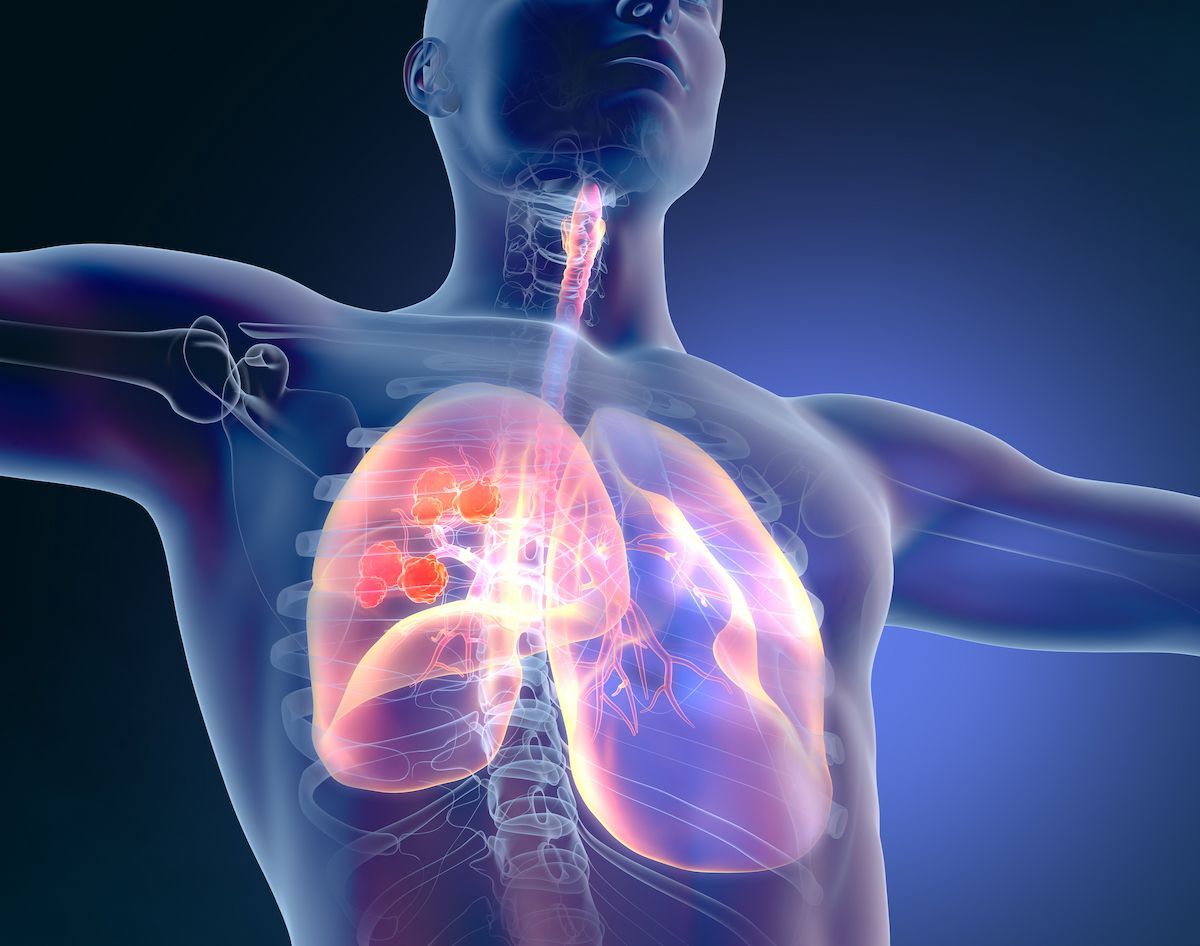Perioperative Chemo/IO Yields Promise as Long-Term Treatment for NSCLC
Patients with non–small cell lung cancer had a positive long-term benefit with perioperative chemoimmunotherapy, according to the 5-year NADIM trial update.
Patients with non–small cell lung cancer had a positive long-term benefit with perioperative chemoimmunotherapy, according to the 5-year NADIM trial update.

Results from the phase 2 NADIM (NCT03081689) trial of perioperative chemoimmunotherapy showed promising long-term benefits with no accompanying safety concerns, which further reinforced its viability as a method of treatment in stage 3IIIA non–small cell lung cancer (NSCLC).
The 5-year progression-free survival (PFS) was reported at 65.0% (95% CI, 49.4%–76.9%) in the intent-to-treat population, and the 5-year overall survival (OS) was 69.3% (95% CI, 53.7%–80.6%). Overall, 11 patients (24%) experienced disease progression and 14 patients died, including 9 from disease relapse and 5 from non-tumor-related causes.
Post-hoc analyses included the per-protocol population. The 5-year PFS and 5-year OS rates were 75.8% (95% CI, 60.6–58.8%) and 82.2% (95% CI, 67.6–90.7%), respectively.
Cancer-specific deaths were noted in 7% of patients for those who did not undergo surgery and developed disease progression. Additionally, 13% of deaths were registered among the 41 patients who received surgery and then had disease progression.
“NADIM is the first trial investigating the value of perioperative immunotherapy to provide information on 5-year survival,” the authors of the study noted. “Our results showed an encouraging long-term benefit and support the use of perioperative immunotherapy as a standard of care for patients with potentially resectable stage IIIA NSCLC. No alarming safety data or unexpected long-term toxicities were observed.”
A total of 51 patients were assessed for eligibility, with 46 enrolled. Of note, there were 34 males and 12 females with a median age of 63, and uniform stage IIIA resectable, treatment-naïve NSCLC. Patients were given 200 mg/m2 of paclitaxel and carboplatin at area under the curve of 6 mg/mL/minute, and nivolumab (Opdivo) at 360 mg every 3 weeks for 3 cycles, which was followed by surgery and adjuvant intravenous nivolumab at 240 mg every 2 weeks for 4 months then 480 mg every 4 weeks for 8 months.
All patients were given 3 cycles of neoadjuvant nivolumab plus chemotherapy, except for 1 patient who withdrew. Additionally, 11% of patients did not undergo surgery. For the 41 patients who did, 10% did not receive adjuvant treatment, and 90% were given at least 1 cycle of adjuvant nivolumab. Of these, 89% received half of the scheduled cycles and 78% completed the scheduled cycles.
The follow-up duration lasted for the last recruited patient alive on July 10, 2023. One patient was lost to follow-up at 36.4 months. The median follow-up was 60.0 months.
The primary end point was PFS at 24 months, with secondary end points including safety and PFS at 5 years.
During treatment, 43 of 46 patients experienced treatment-related adverse events (TRAEs). Of note, 30% were grade 3 or worse, the most common being febrile neutropenia (7%) and lipase increase (4%) during neoadjuvant treatment, and elevated serum amylase (8%) and lipase increase (8%) and during the adjuvant phase. Serious AEs included neutropenia (2%) and elevated serum lipase (2%) during neoadjuvant treatment, and elevated serum lipase (3%) during adjuvant treatment.
No patient discontinued treatment during the neoadjuvant therapy due to AEs, however, 3 were not given adjuvant nivolumab due to TRAEs that developed during the neoadjuvant treatment. No treatment-related deaths were recorded.
Preplanned exploratory endpoints were the determination over whether biomarkers PD-L1, TMB, or ctDNA were predictive for survival. PD-L1 and TMB were both measured to be unreliable in predicting progression-free survival and overall survival.
Throughout the trial and after neoadjuvant treatment, ctDNA clearance proved to be a good predictor of greater PFS and OS.
In patients with ctDNA clearance, 5-year progression-free survival and overall survival were 85.2% (95% CI 65.2%–94.2%) and 92.3% (95% CI, 72.5%–98.0%), and in patients with ctDNA detection after neoadjuvant treatment was 60.6% (95% CI, 29.4%–81.4%) and 59.2% (95% CI, 27.9%–80.7%), respectively. Additionally, patients with ctDNA clearance who did not go through surgery remained alive. This fact leaves open the possibility of future research.
A small sample size, the lack of a control group, and the exploratory nature of translational studies are the most severe limitations of the study.
The authors also highlighted that additional studies are needed to further evaluate the efficacy and potential of the long-term effects associated with perioperative chemoimmunotherapy, but the results of the NADIM study show promise as a necessary first step.
Reference
Provencio M, Nadal E, Insa A, et al. Perioperative chemotherapy and nivolumab in non-small-cell lung cancer (NADIM): 5-year clinical outcomes from a multicentre, single-arm, phase 2 trial. Lancet Oncol. 2024;25: 1453-64. doi.10.1016/S1470-2045(24)00498-4